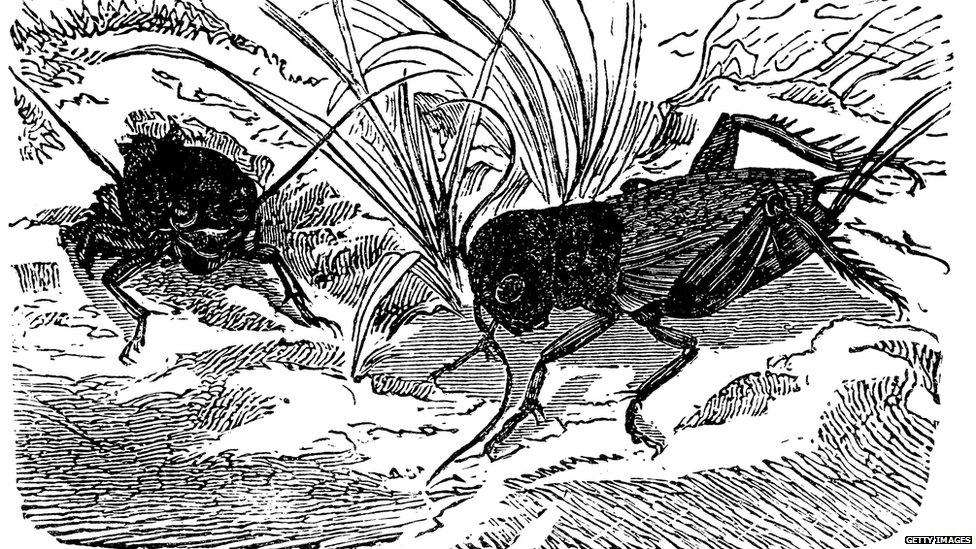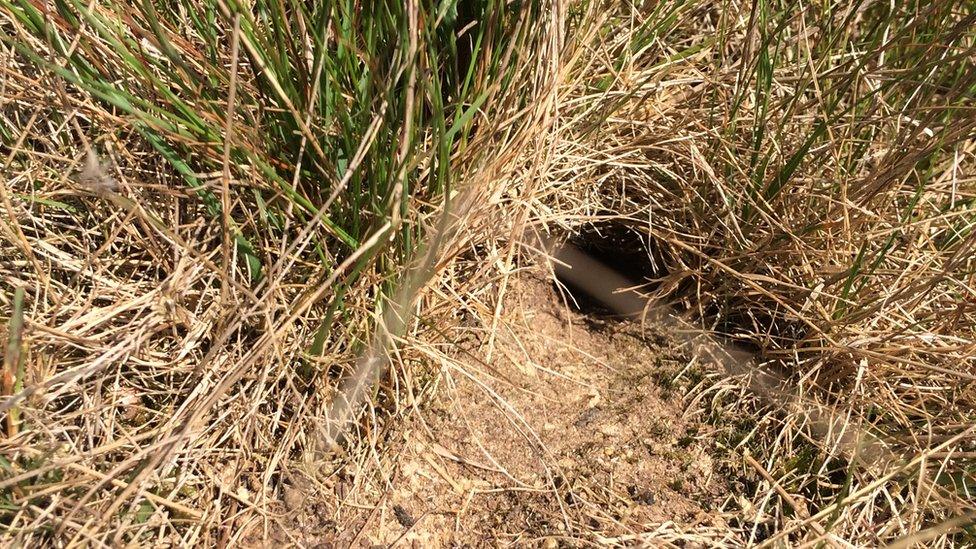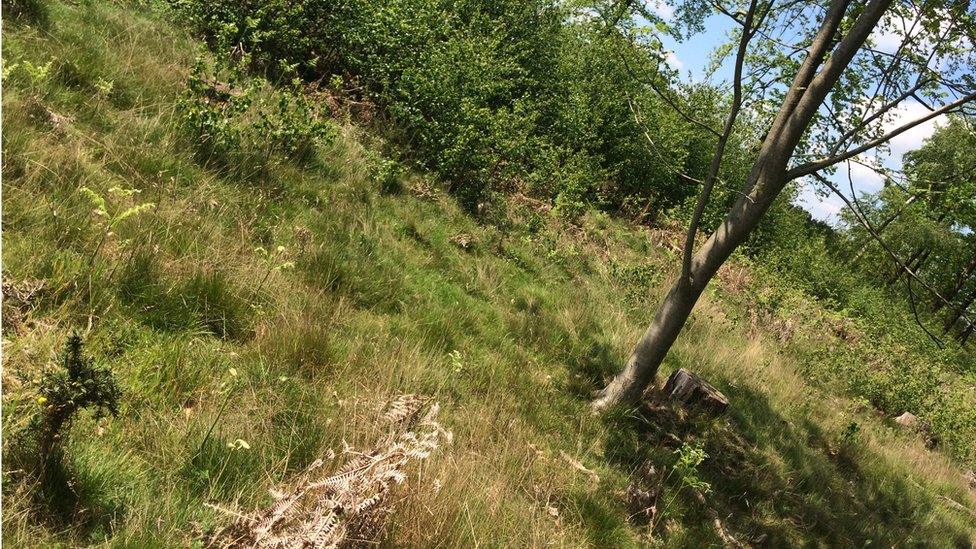Cricket's summer song making a comeback
- Published

The field cricket, Gryllus campestris, is an extremely rare, declining and threatened insect in the UK
The cheep, cheep, cheep of a cricket in the grass is the quintessential sound of summer.
As I crunch over heathland in search of the elusive insect, the song fills the air, as if conjured up by a magician.
My companion, Mike Coates, the warden here at RSPB Farnham Heath, beams with delight.
Earlier, before setting out for the reserve, he'd warned me that the insects are rare, and might not perform on cue.
"It's not so much looking, we're going to be listening mostly for the sound of male field crickets chirruping in order to attract a mate," he explained, over a mug of tea in the staff portacabin.
"It's just a brilliant noise. It's like summer translated into sound - it's fantastic."
Silent summer
The song of the field cricket was once a familiar soundtrack on the heaths and grasslands of south east England.
However, the sound has fallen silent in many parts of the country.
The 18th Century naturalist, Gilbert White, wrote of "field-crickets shrill on the verge of the forest" in his diaries.

Illustration of a European field cricket
Here, not far from the village of Selbourne in Hampshire, where White lived, the insects were once common.
The founding father of British natural history writing recorded in 1791: "May 29: The race of field crickets, which burrowed in the short Lythe (a field near Selbourne), and used to make such an agreeable shrilling noise the summer long, seems to be extinct.
"The boys, I believe, found the method of probing their holes with the stalks of grasses, and so fetched them out and destroyed them."
Today the field cricket, Gryllus campestris, faces threats beyond torturous children.
In the last century, changes in land management and loss of natural habitat have led to a dramatic decline of the insect across northern Europe.
By the 1980s in the UK, field cricket numbers had dropped to fewer than 100 individuals, all found only in one location in West Sussex.
A decade later, conservationists began catching young field crickets and moving them to new sites across Surrey, Sussex and Hampshire in a bid to save them.

Mike Coates of the RSPB at Farnham Heath Reserve.
Mike Coates says nowhere near enough people get to hear the sound of the male singing cricket, as there are probably only eight populations left in the UK.
"Extinction is something tragic," he says. "These things have been around, they've been part of people's lives here, they've been written about, they've been significant in that way for centuries.
"Are we really going to be the generation that loses them? That would be appalling."
The project to move young crickets to new areas is showing signs of success.
A colony of around 300 has become established from only 12 individuals, within five years, at the RSPB's Farnham Heath reserve. This has become one of the largest field cricket populations in England.
The aim is to establish a second population next to the Rural Life Centre in Tilford, Surrey.
'Tickling' crickets
In May, conservationists from the RSPB moved a small number of crickets to the new site.
Using a technique known as "tickling", the young field crickets, known as nymphs, were tempted to leave their burrows and then captured.
"We want to get them translocated and a new population established in a part of our reserve here that's open to the public," explains Mike Coates.
"So, that lots more people get the chance to hear this wonderful noise and to find out more about these fascinating little insects."

The crickets can only walk or hop. They don't travel far from their burrows.
The male's courtship song is made up of normal chirps or trills alternating with high-pitched chirps given when a female is nearby.
"They sit there and they produce this fantastic chirruping noise," he says. "The females listen out and think, 'Hmm I don't like the sound of him, not so fussed about him, Oh he sounds interesting'.
"And, then the females will go out and go to the burrow of the males that they find the most appealing, and then the females will lay eggs."
The young larvae, called nymphs, hatch and develop over the late summer and autumn. They then dig a burrow to hibernate, while the adults die-off.
In the spring, the nymphs emerge, to start the cycle over again.

The habitat is acidic grassland, with fescues and wavy-hair grass
Hayley, a volunteer at the reserve, is helping to survey the singing male crickets.
"I think it's just restoring things back to how they should be," she says.
"It's part of the life cycle. These [crickets] will be food for other animals, which are native to this area, and it will bring other local animals back and really restore the heath to its former glory."
Follow Helen on Twitter., external